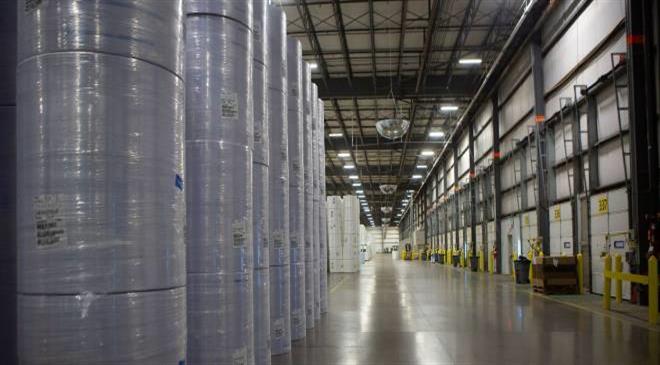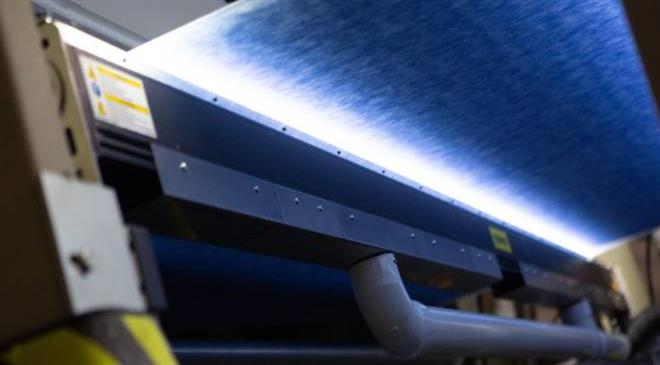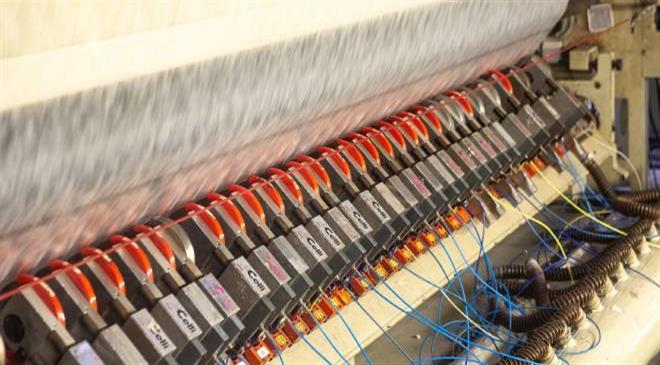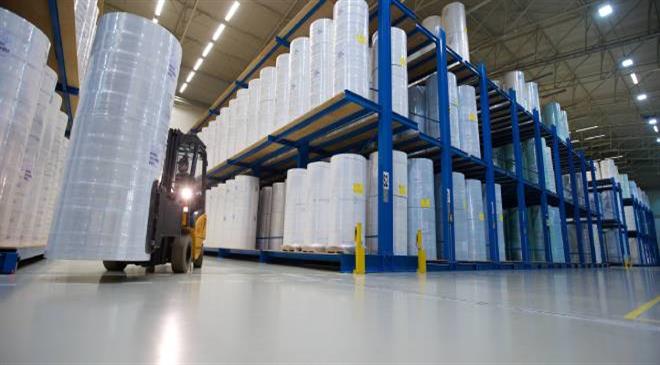In process to introduce nonwovens based on 100% bio-sourced polymers
PFNonwovens (PFN) was established in 2018 by the combination of two nonwoven companies in the world, Pegas Nonwovens and First Quality Nonwovens. It is one of the leading producers of nonwoven textiles for use primarily in the personal hygiene products market. Fibre2Fashion interviewed Tonny De Beer, Chief Product, Technology and Sustainability Officer, PFNonwovens, to understand how much the hygiene nonwovens industry is set to grow worldwide, the current supply chain issues due to the pandemic and the way the company is meeting its sustainability goals.
At PFN, we expect that the hygiene nonwovens industry will continue its average global growth rate of 3-6 percent per year. Due to the current high level of volatility, the growth rate has become less predictable and is expected to come with more stops and starts in the next 5 years. Despite the high level of economic uncertainty, hygiene nonwoven players have continued to make investments to support that growth in demand. As a specific example, China NW supply has significantly outpaced demand. For the next few years, we expect that the direct and indirect effects of the Covid pandemic will continue to have a strong impact on what type of nonwovens will disproportionately grow and which materials will lose share. There appear to have been a few habit changes in terms of wipe and diaper utilisation, which has led to increased consumption. Consumers in the developed world are looking for high quality products as they spend more time at home with their kids versus having them in daycare facilities. Of course, there also has been a measurable impact due to the higher use of face masks and medical fabrics. As the pandemic comes in waves, supply-demand will remain unpredictable and unstable for the near future.
The majority of our nonwoven supply has now shifted to regional with a strong trend of further reduction of trans-Atlantic shipments. The merger was a key enabler to transfer technologies between the US and the Czech Republic sites and allowed us to localise supply. The global transportation issues actually ended up accelerating our plans to achieve this reshuffling of the portfolio and be better positioned to compete on a regional basis.
The increased need for face masks to protect against the spread of COVID-19 has driven growth in that segment. In addition, within the medical nonwoven industry there has been a switch to garments and products needed to fight COVID-19, while there has been a concomitant drop in demand of products that are only used during elective and non-essential surgeries and treatments. The wipes segment has also seen significant growth due to increased cleaning in consumers’ homes, in public places and industrial settings. Despite the lower predicted birth rates in the US and Europe, the overall demand for diaper materials has overall stayed flat. The baby care category did experience more volatility than others as supply chain disruption caused more issues for this category as it contains many more components.


Birth rates in North America and Western Europe are indeed flat at best with the risk of a downward trend. The increased technical performance of nonwoven materials also has led to better quality diapers, and this may gradually reduced consumption. However, some of the emerging diaper designs require different kinds of nonwovens and this may offset part of the decline. While the acceptance of adult incontinence products is growing, this is not yet at a rate that it can fully compensate for a decline in baby diaper demand. There was an expectation that aging baby boomers would drive broader acceptance of adult incontinence products, as this generation has a strong drive to stay active and continue to live their normal life. It remains to be seen if that will play out, but that could quickly lead to more growth in hygiene nonwovens.
The pandemic is not over, as vaccination levels continue to be too low to prevent resurging effects of new COVID-19 variants. Even in recent weeks a new variant, Omicron, has rapidly emerged and this will present new challenges. We may be in an important transition phase, during which we learn to live with the virus. This means that new normals are being established and that hopefully comes with a more stable business environment versus a situation where volatility is the new normal. Examples of this could be (i) the more common wearing of face masks, (ii) people will more often work from home, which will change cleaning habits, and (iii) hygiene standards in institutions and places like restaurants, hotels and airplanes may have changed permanently.
“Our innovative solutions provide unrivalled levels of wellness and protection which improve people’s lives while helping build a more sustainable world” is our mission statement. Hence, our team works day and night to develop, commercialise and supply nonwoven fabrics that make disposable hygiene and medical products the most comfortable to wear, while providing the highest level of protection against biofluids. It is our main strategy to help our customers to differentiate versus their direct competition with highly customised solutions. This allows our customers to offer unmatched value propositions to both the end consumer and the retailers in the value chain. Equally important, it is our objective to lead with more sustainable nonwoven solutions that will transform the hygiene and medical markets.

There certainly will be more than one solution, and technologies are emerging based on (i) bio-sourced polymers, based on (iii) recycled polypropylene, polyethylene or polyester and there are even (iii) some biodegradable options on the horizon. In the next 5 years significant growth is expected for bio-sourced nonwoven fabrics that use BioPE, BioPP, PLA and/or PHA. In parallel, there have been significant advancements in recycling of various polymers, and with increasing scale the economics of this approach will lead to broader adoption. There are significant efforts by the resin producers to use either physical or chemical recycling methods to produce resin grades that can be marketed as mass-balanced recycled resins, and once the pricing of these resins becomes more competitive, the market can adopt quickly to implement this approach. Of course, most nonwoven producers have recycled most of their waste for years already. Finally, higher performance fabrics or different product forms can reduce the consumption rate of the final product, and thereby reduce waste. The nonwovens that enable this will be a key part of these product design changes. It will be no surprise that we have programmes at PFN in all these areas.

We have made significant progress in this area. We are already recycling all of our plastic nonwoven waste that can safely be recycled back into our production process without quality issues or production losses. Most of our products contain up to 10 percent of recycled resin, while we have a few specialty products with significantly higher amounts of recycled material.
The integration of two of the most innovative companies, Pegas and First Quality Nonwovens, into one has gone very well. There was immediate common ground among the two cultures in wanting to make a meaningful difference in people’s lives by offering the best nonwoven products. Following the merger, we worked hard to redefine our mission and vision, and defined four core values that guide our decision making: agility, care, trust and excellence. This process was important as it has given us one common and new identity. The exchange of know-how has rapidly led to being able to offer new products in our respective markets, and we have been able to offer a broader portfolio of products to our customers. The merger also led to a focused expansion strategy. We are in the commissioning phase of the first R5 in the US, which is equipped with a special unit to make ultrasoft and textured nonwovens. We are also expanding our South Africa site and will install an R5 by the end of the year to serve the Southern African market. Thus, the stronger footprint in Europe, North America and Africa has really been paying off in providing better products to our customers, and we have been able to capitalise on the renewed interest in localised supply of nonwovens in response to the instability of supply chains.
Supply chains continue to be disrupted and require a daily and intensive management approach. We had to be agile in finding and commercialising alternative resins and additive formulations, and that is work that we are continuing today to increase our own resiliency of supply. Especially long supply chains into and out of our plants are more costly now and remain challenging to manage. We are therefore focusing on more local supply chains to our customers as well as sourcing more local solutions ourselves. Our recent investments in both the US and in South Africa are perfect examples of providing more local supply to avoid long shipping lines.
PFN will continue to drive innovation with a greater emphasis of products that improve our sustainability footprint. We have a strong pipeline with new spinning technologies and formulations that will allow us to continue to operate at the cutting edge of nonwoven development. Our expansion plans will therefore continue to allow us to meet our mission to provide nonwoven products that provide the highest level of wellness, protection in a more sustainable manner.
DISCLAIMER: All views and opinions expressed in this column are solely of the interviewee, and they do not reflect in any way the opinion of technicaltextile.net.